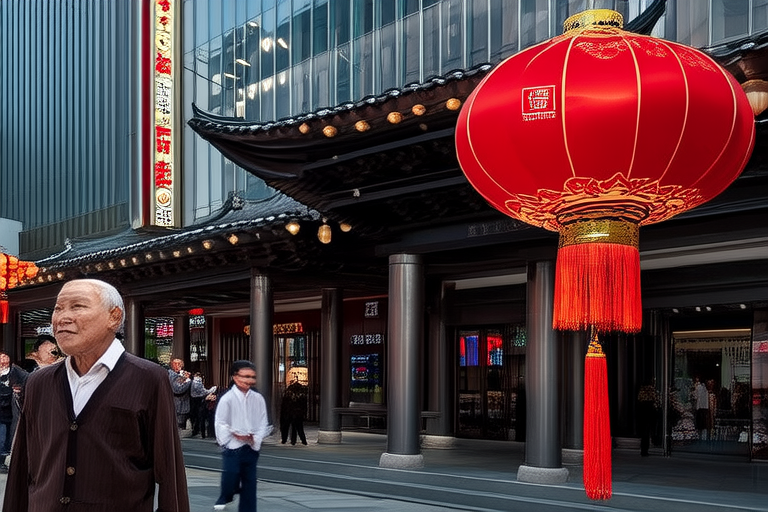The Impact of Modernization on Traditional Cultural Customs

The Impact of Modernization on Traditional Cultural Customs
Introduction
Modernization is a multifaceted process characterized by technological advancement, globalization, and urbanization. These forces reshape societies, economies, and cultures, often leading to profound changes in traditional cultural customs. Traditional cultural customs are deeply ingrained practices, rituals, and beliefs that define the identity and heritage of a community. They serve as a vital link to the past, fostering a sense of continuity and belonging.
This article explores the impact of modernization on traditional cultural customs across different regions around the world. It examines both the positive and negative effects of modernization, highlighting the challenges and opportunities it presents for the preservation and evolution of cultural heritage. The main argument of this article is that while modernization poses significant threats to traditional customs, it also offers valuable tools for their preservation and promotion.
Positive Impacts of Modernization on Traditional Cultural Customs
One of the most notable positive impacts of modernization on traditional cultural customs is the increased awareness and appreciation of these practices on a global scale. Tourism, for instance, plays a crucial role in promoting and preserving traditional customs. In many parts of the world, cultural tourism has become a significant source of income for local communities, encouraging them to maintain and showcase their heritage. For example, the Maasai people in Kenya and Tanzania have embraced eco-tourism, allowing visitors to experience their traditional way of life while supporting conservation efforts.
Technology and media also contribute to the preservation and promotion of traditional customs. Digital platforms enable communities to document and share their cultural practices with a wider audience. Social media campaigns, documentaries, and online exhibitions provide a global stage for cultural expression, ensuring that traditional customs remain relevant and accessible. Additionally, modern communication technologies facilitate the exchange of knowledge and ideas between different cultural groups, fostering cross-cultural understanding and collaboration.
Certain cultures have successfully integrated modern practices while maintaining their heritage. The Balinese people, for instance, have incorporated elements of modern architecture into their traditional temples, creating a harmonious blend of old and new. Similarly, the Ainu people of Japan have used digital storytelling to preserve their oral traditions, ensuring that their rich cultural legacy is passed down to future generations.
Negative Impacts of Modernization on Traditional Cultural Customs
Despite its benefits, modernization also poses significant threats to traditional cultural customs. Globalization and urbanization, in particular, can lead to the erosion of traditional practices. As communities migrate to cities in search of better economic opportunities, they may abandon their rural roots and the customs associated with them. The influx of mass culture, including popular music, fashion, and entertainment, further dilutes the uniqueness of local traditions.
Many traditional customs have been lost or altered due to modernization. For example, the practice of weaving intricate textiles by indigenous communities in Latin America has declined as cheaper, machine-made fabrics become more widely available. Similarly, the traditional methods of preparing food and medicine have been replaced by industrialized alternatives, leading to the loss of invaluable knowledge and skills.
Communities face numerous challenges in preserving their customs in the face of rapid change. The younger generation, in particular, may be less inclined to embrace traditional practices if they are perceived as outdated or irrelevant. Economic pressures and the allure of modern lifestyles can also lead to the abandonment of cultural traditions. Moreover, the homogenization of global culture, driven by the dominance of Western media and consumerism, threatens the diversity of cultural expressions worldwide.
The Balancing Act: Strategies for Preserving Cultural Heritage
To strike a balance between modernization and cultural preservation, communities must adopt innovative strategies that allow them to adapt to change while retaining their cultural identity. One effective approach is sustainable tourism, which promotes responsible travel practices that respect and support local communities. By involving locals in tourism initiatives, communities can ensure that visitors have authentic experiences while contributing to the preservation of cultural heritage.
Community-led preservation projects are another vital tool for safeguarding traditional customs. These initiatives empower local residents to take ownership of their cultural heritage, fostering a sense of pride and responsibility. For example, the Zuni Pueblo in New Mexico has established a cultural center that showcases their traditional arts and crafts, offering workshops and demonstrations to both tourists and locals. Such projects not only preserve cultural practices but also create economic opportunities for the community.
Education and policy play a critical role in safeguarding cultural heritage. Schools and universities can incorporate cultural studies into their curricula, teaching students about the value and significance of traditional customs. Governments can enact policies that protect cultural sites and practices, providing funding and resources for preservation efforts. International organizations, such as UNESCO, can offer support and guidance to communities working to preserve their heritage.
Conclusion
In conclusion, modernization has had both positive and negative impacts on traditional cultural customs. While it offers valuable tools for the preservation and promotion of cultural heritage, it also poses significant threats to the survival of these practices. The key to ensuring the continued relevance of traditional customs lies in finding a balance between modernization and cultural preservation.
As the world becomes increasingly interconnected, it is essential to recognize the importance of cultural diversity and the role that traditional customs play in shaping our shared human experience. By adopting innovative strategies and fostering a greater appreciation for cultural heritage, we can ensure that these practices continue to thrive in a rapidly modernizing world.
The future of traditional cultural customs depends on our ability to strike a balance between embracing modernity and honoring our cultural roots. Through education, policy, and community-led initiatives, we can safeguard the richness of our cultural heritage for generations to come.